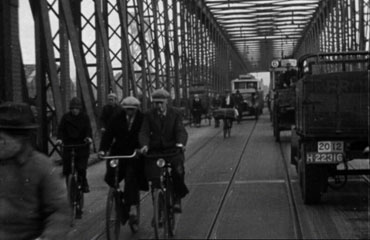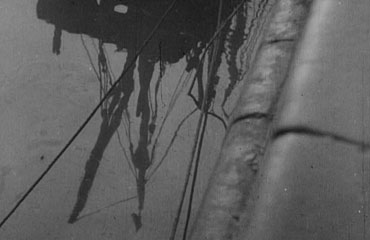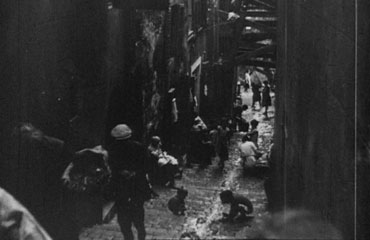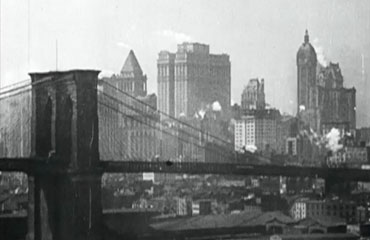Harbour Cities
A film programme with a quartet of city films from the 1920s, representing four port cities in manifold manners.
In the interwar period the city symphony was a highly popular film form. By combining experimental, documentary and narrative techniques, these films took the city as protagonist. Urban images were organized according to musical guidelines as visual symphonies. By this, the films internalised the pulse of the modern city and translated it into the language of cinema. The most famous example is Walther Ruttmann’s film Berlin: Die Sinfonie der Grosstadt (1927). However, there are numerous other city symphonies from the 1920s and 1930s that are anything but less interesting and to this day possess an enormous visual power. In this context, the number of films about port cities is striking, covering cities as diverse as New York, Tokyo, Rotterdam, Porto or Ostend.
Under the topic of the city symphony and the port city, four films will be screened (on 16mm and 35mm) that represent both the metropolis (Manhatta, Paul Strand & Charles Sheeler, 1921) and smaller, mid-size cities (Images d’Ostende, Henri Storck, 1929/30; De Stad die Nooit Rust, Friedrich von Maydell & Andor von Barsy, 1928; Impressionen vom alten Marseiller Hafen (Vieux Port), Laszlo Moholy-Nagy, 1929). De Stad die Nooit Rust about Rotterdam has recently been reconstructed by EYE Film Institute Netherlands in its original premiere version that had been lost for eighty years.
Musician Johan Derycke will accompany the films. A short introduction will be given by film historian and moving image archivist Eva Hielscher, who is doing research for her PhD within the project ‘City Symphonies: Urban Modernity, Film, and Avant-Garde (1920-1940)’ at Ghent University.
A film programme by Eva Hielscher and Steven Jacobs, Art History Department, Ghent University. In cooperation with Courtisane.



